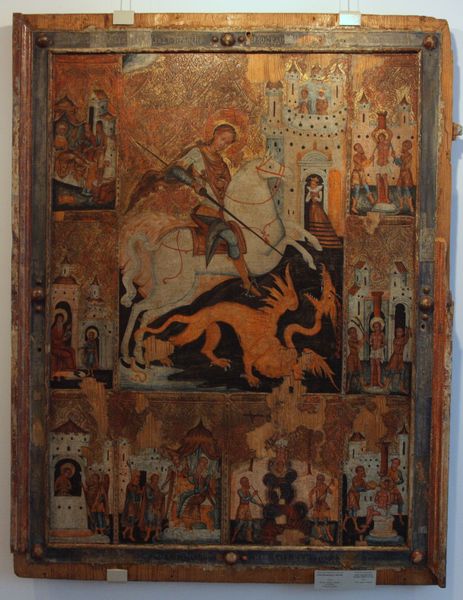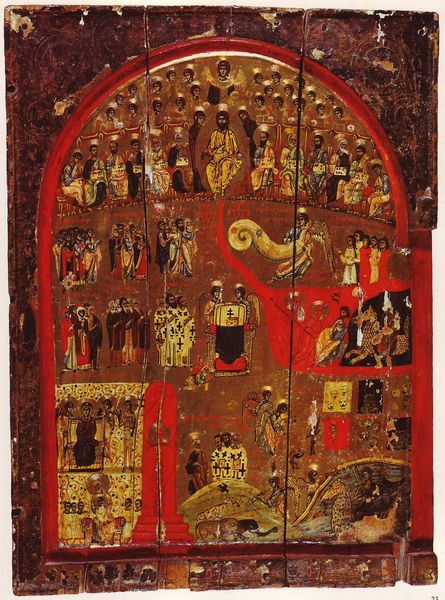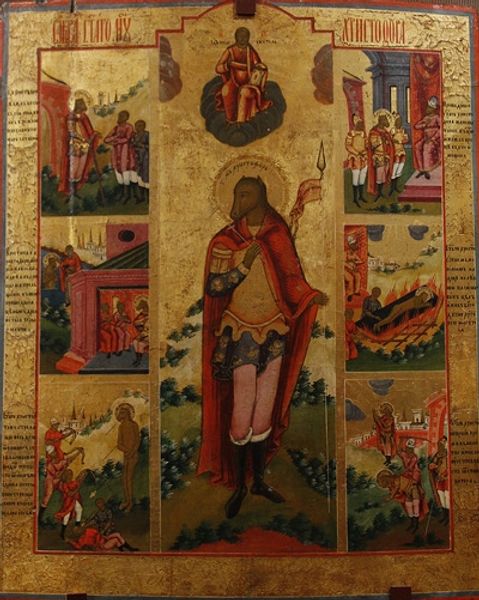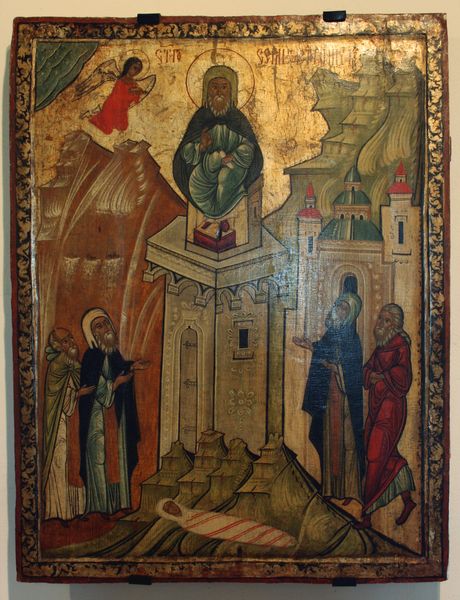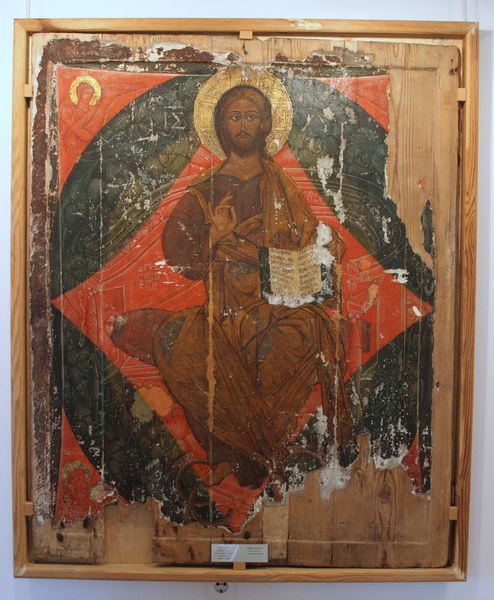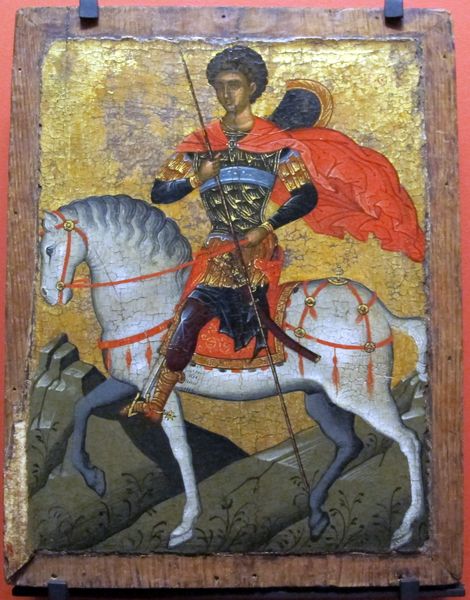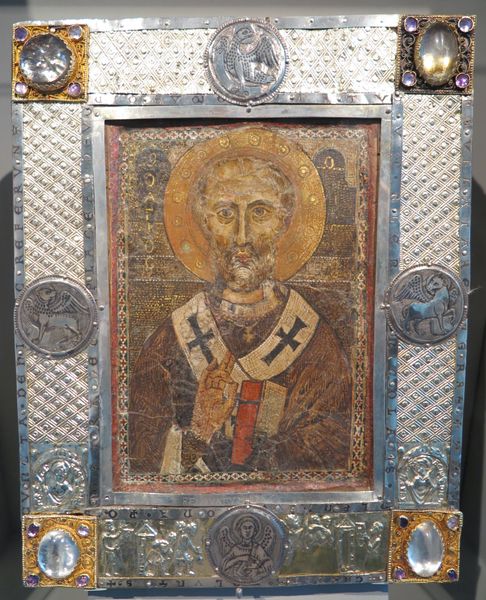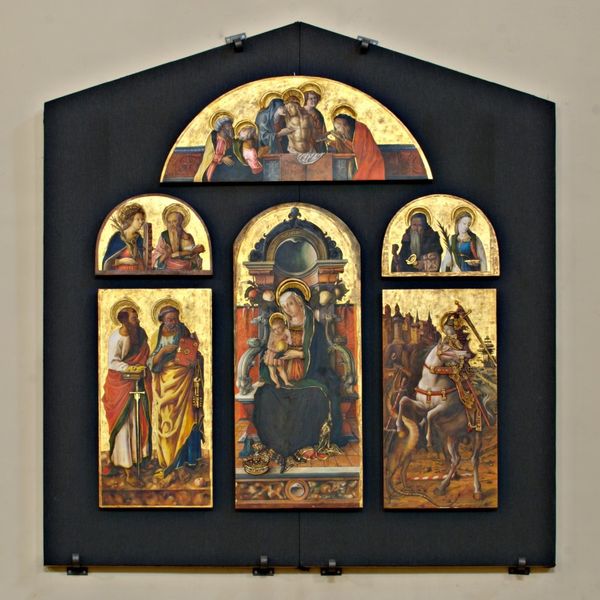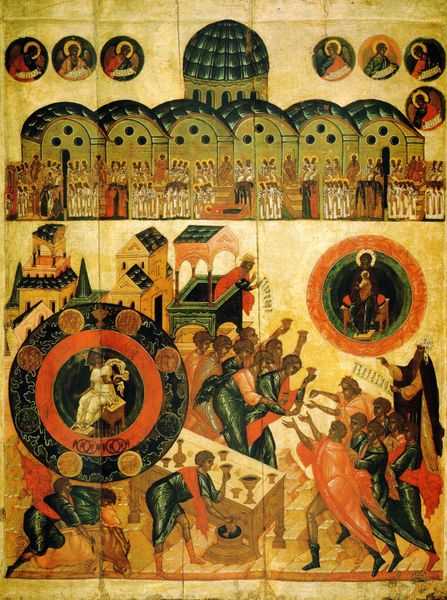
tempera, painting
#
gouache
#
byzantine-art
#
water colours
#
tempera
#
painting
#
figuration
#
history-painting
Copyright: Orthodox Icons,Fair Use
Curator: Let’s turn our attention now to this striking piece, Saint George, dating from about 1450. It’s painted in tempera on a wood panel. Editor: My first impression is of layered stories—scenes framed within the whole, almost like a graphic novel preceding the modern format. A sort of compressed narrative on one surface. Curator: Precisely. Note the rigid symmetry, how each small framed image contributes to the whole. This symmetry reinforces the central image of Saint George slaying the dragon, the iconic theme made even more compelling through Byzantine artistic conventions. Consider how the linearity and the gilded background elevate the narrative beyond the earthly. Editor: The panel bears witness to its age—you see the craquelure. One might almost say the cracks embody time, or even mimic a broken surface under the weight of history. Do you think the materials available at the time—the pigments and the panel itself—dictated the artist’s approach, the limitations shaping its unique character? Curator: Without a doubt. But these limitations—in pigment, for example—can also become stylistic choices, lending to the artwork its particular visual character and symbolism. Look closely at the gold leaf. How does this detail contribute to the overall visual message and to the painting's deeper, more religious themes? Editor: It’s also worthwhile noting how tempera impacts luminosity. While this Saint George conveys authority through gesture, stance, the method of its making brings another quality: it feels reverent, even humble. It merges material, technique, and artistic intention into something greater than just surface representation. Curator: I appreciate how the composition functions almost like a grid, segmenting moments. The various scenes in sequence surrounding the principal image allow us to experience the narrative across time while witnessing its singular heroic instant. Editor: I’m taking away an acute awareness of time. From its creation through to now. From the sequential scenes it represents to its ageing wood and fractured tempera surface, it bears the imprint of all the matter it once was. Curator: And now we see it anew. Let's move on to the next piece.
Comments
No comments
Be the first to comment and join the conversation on the ultimate creative platform.
